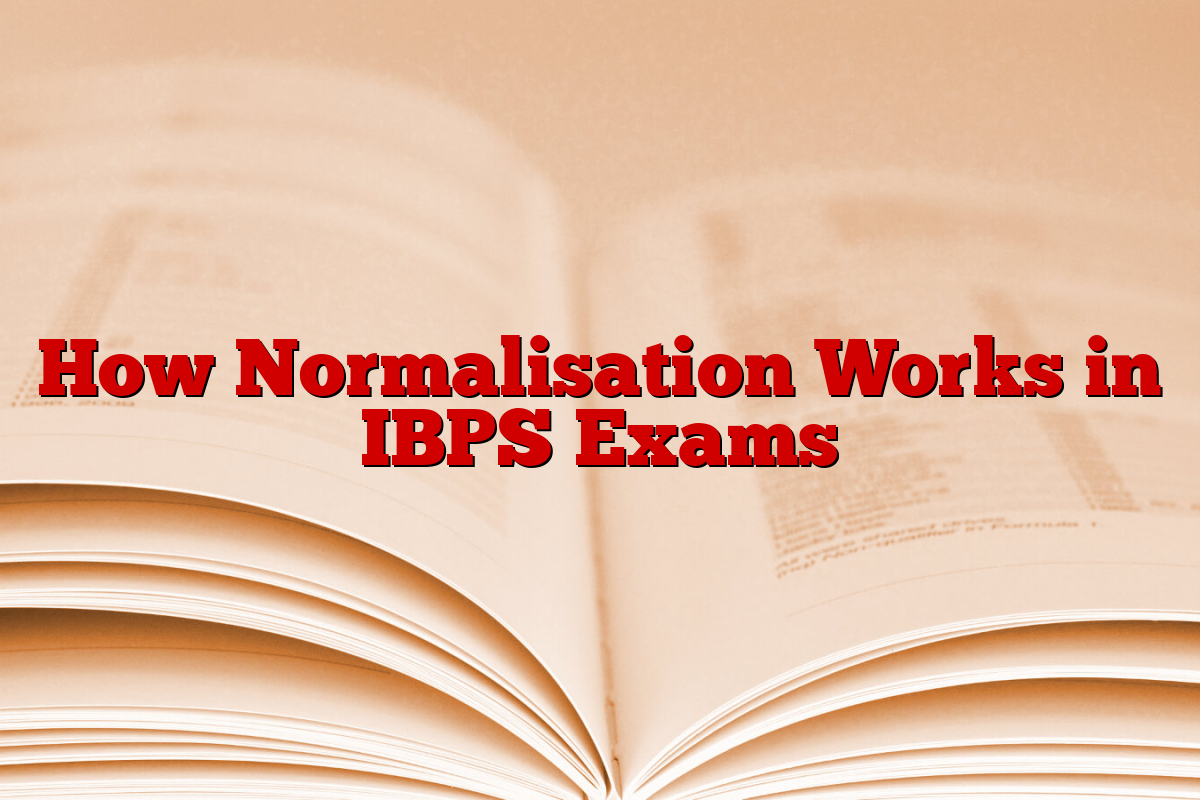In recruitment examinations conducted by IBP (Institute of Banking Personnel Selection), fairness is important, especially when the examination is conducted in several innings. IBPS conducts exams in several innings in different days, each with a separate question paper. These paper, although the syllabus and the same in the structure, may vary slightly in difficulty. To ensure that no candidate is incorrectly benefiting or deprived, the innings in which they appear, IBPS uses a method called IBPS called. Equalityl par, ie normalizationTo accommodate the score in all sessions.
Generalization in IBPS Examination
In competitive examinations with several sessions, such as conducted by IBP, normalization through coherence plays an important role in ensuring fairness. This adjusts to variation in paper difficulty so that all candidates are judged by the same standard. This system not only promotes transparency, but also prevents the fate of the draw in shift allocation to the candidates from being wrongly affected. Understanding how it works helps candidates rely on the process and focus more on preparation than speculation.
Equalityl equals for IBPS exams
Espercentile Equating is a statistical technique used to score from various testing forms (ie, question papers). This ensures that a score in a test reflects the same performance level or percentage rank as a score in another. Espercentile is determined by the score:
YET = FY–1(FX(X))
Where,
YET = Equal percentage in their respective distribution
FY–1 = The opposite of cumulative distribution ceremony of testing from B
Get raw score from X Test A
Raw score from Y Test B
FX(X) and fY(Y) Represent the cumulative distribution works of X & Y respectively.
For example, if a candidate scoring 60 in Shift 1 is at 80th percent, and another candidate in Shift 2 is also at 80th percent, even if they have the same scores, even if regardless of the difference in paper difficulty. This method ensures that all candidates have been ranked fairly, even though the exam they gave were not the same in difficulty.
How Normalization in IBPS exam works
IBPS score follows a structured approach to equal during generalization:
- Score distribution is calculated For each innings to understand how the candidates performed overall.
- Smooth technology To reduce random noise and discrepancies, it is applied using statistical model (eg log-lectured model).
- Is chosen as a session Base shift for comparison.
- Percent rank The score is calculated within each shift.
- For every score in a given shift, a related Equivalent score The percentage is identified in the base shift using the percentage matching.
- These adjusted scores are used for merit listing and selection.
Here are some examples with clarification to help to understand how the equipped equality in IBPS exams works and it ensures fairness in many changes:
Example 1: Equal percentage, separate raw scores
Suppose two candidates appeared in various changes of the same IBPS exam.
- Candidate A (Shift 1) scored 47 marks
- Candidate B (Shift 2) scored 49 marks
Now, based on the performance of other candidates:
- Shift 1 = Percentage of candidate A in 88th percent
- Shift 2 = Percentage of candidate B in 88th percent
Since both are at the same percentage, their performance is considered the same, even if their raw scores are different. IBPS will match the score, so both candidates are given the same generalized score, 50 marks. Even if the paper of Shift 2 was easy and more high scorers, the percentage comparison ensures that both candidates are evaluated based on colleague performance.
Example 2: How to have a less raw score after normalization
suppose:
- Shift A had a difficult volume segment and less high score.
- Shift B was a bit easy and saw more candidates scoring high.
Now consider:
- Candidate X is a score in 42 points shift, which holds them in 90th percentage
- Candidates in Shift B score are 46 marks, but only 85th percent
Although the candidate X scored less in raw points, he performed better relative to his innings.
After being equal to the Empersantile, the candidate X may get a generalized score of 53, while the candidates can get 51.
This shows that the percentage rank, not only the raw score, is the one that focuses when determining the IBPS final qualification.
Example 3: Small difference in percentage, large impact on generalized score
Let’s take:
| Candidate | shift | raw score | Percentage | Generalized score |
| A | 1 | 38 | 72nd | 42 |
| B | 2 | 41 | 75th | 44 |
| C | 3 | 40 | 80th | 47 |
Here, percentage in percentage (72nd to 80th) has a noticeable increase in generalized scores. This is because percentage rank refers to relative performance, and even a few percentage points can reflect a large jump in the performance within a tightly packed distribution.
Example 4: Matching score using percentage rank
Suppose this distribution in Shift A is:
| raw score | Percent rank |
| 35 | 65th |
| 40 | 75th |
| 45 | 85th |
And Shift B has:
| raw score | Percent rank |
| 37 | 65th |
| 42 | 75th |
| 48 | 85th |
If a candidate scores 40 in Shift A, he is at 75th percent.
To match this score, IBPS sees what score in Shift B matches the 75th percent, which is 42.
So, 40 (shift A) becomes 42 after normalization, on the basis of percentage matching.

